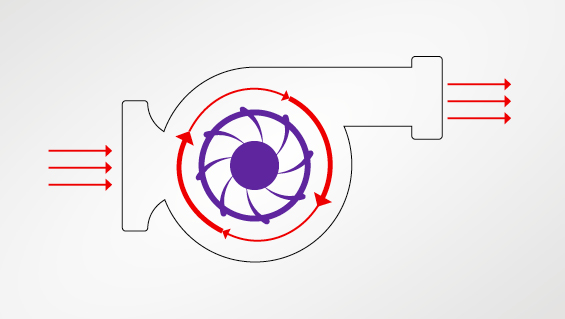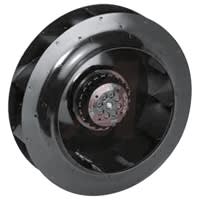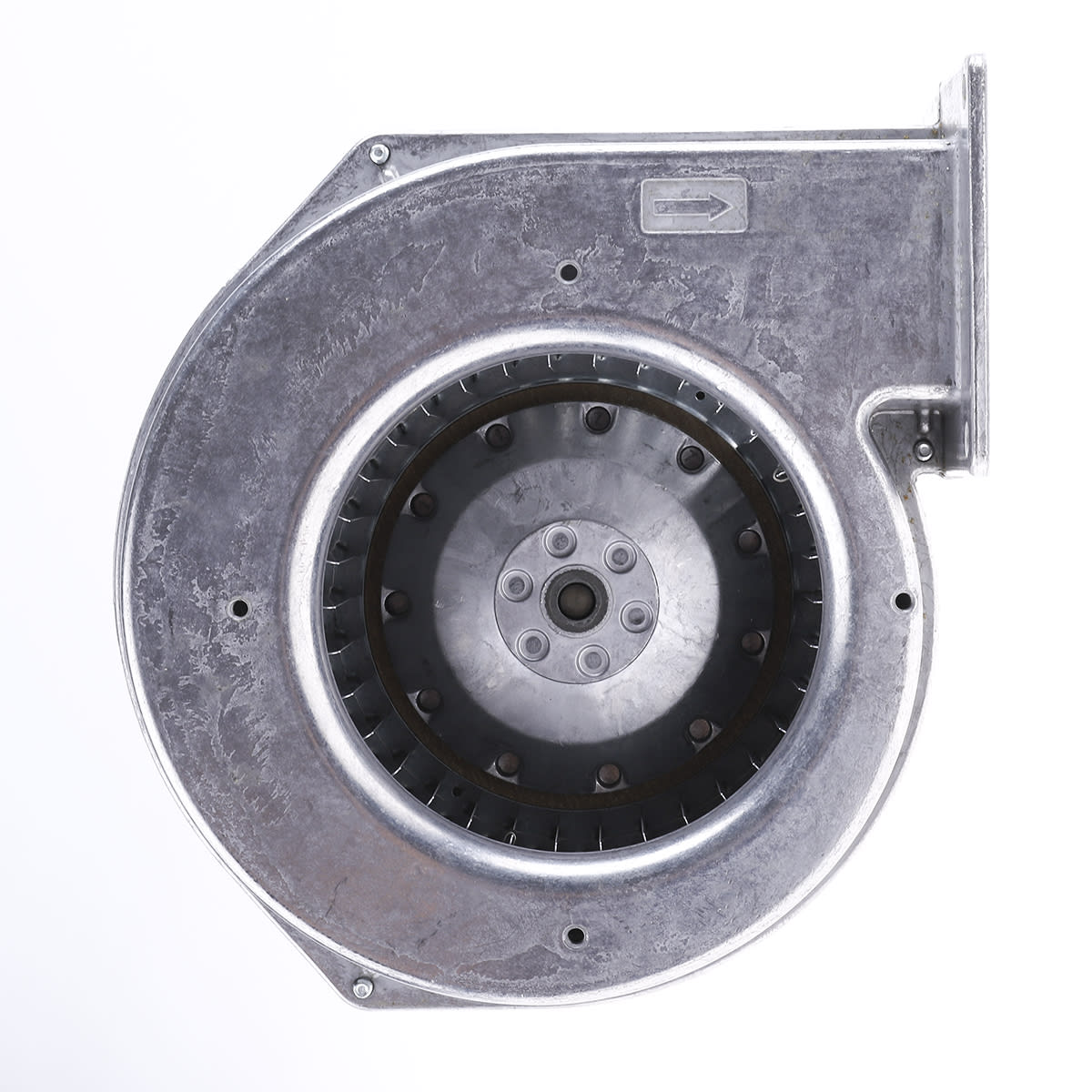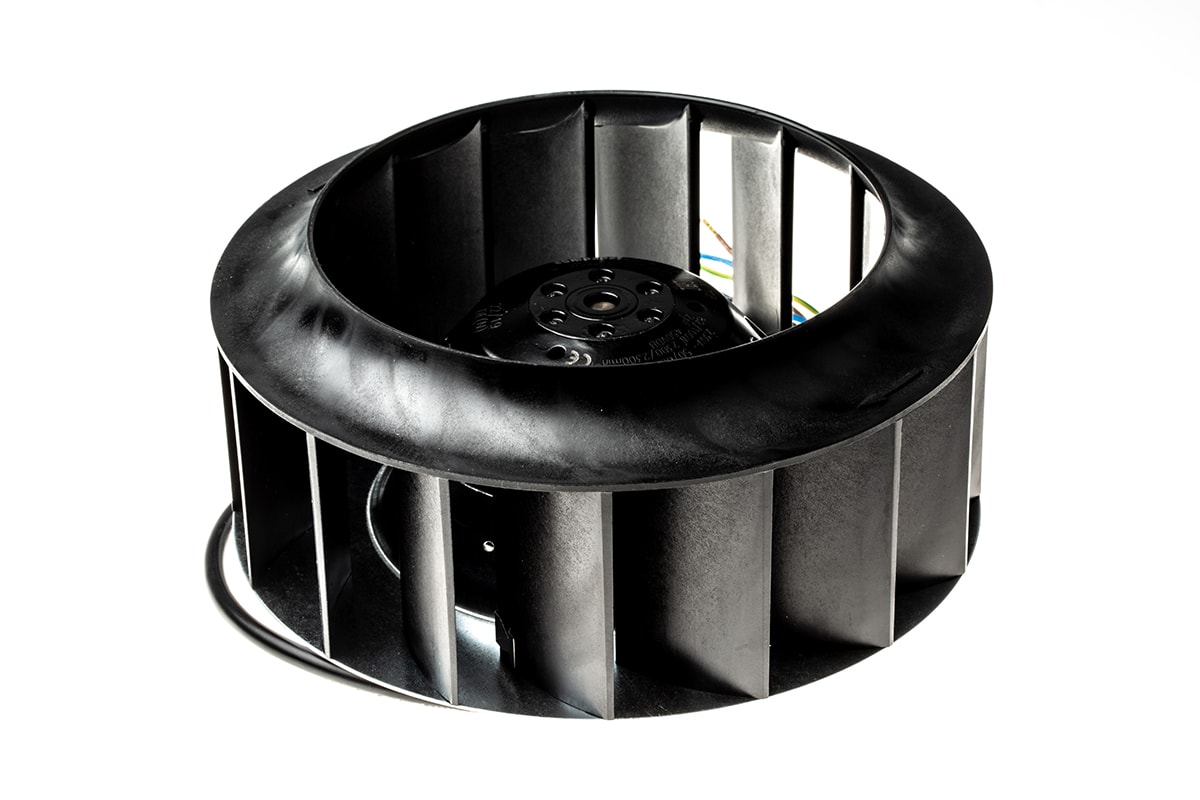Centrifugal Fans - A Complete Guide
Our guide explains the uses of centrifugal fans, how they work, and the various types and characteristics.

What is a Centrifugal Fan?
Centrifugal fans are robust, typically drum-shaped devices used to provide a high-pressure flow of air for cooling, ventilation, and other uses.
Commonly known as blowers, centrifugal fans are noted for their reliability, adaptability and low noise output. They can be used to move gas as well as air and have a decent lifespan with little maintenance or cleaning required, even in harsh industrial environments.
Centrifugal Fan Uses
Centrifugal fans are a central component in many widely used fixtures and devices. Blower applications include:
-
Heating, ventilation and cooling (HVAC) i.e. building ventilation systems
-
Dust and gas extractor fans
-
Air conditioning systems
-
Air filtration and pollution control devices
-
Industrial conveyors
-
High capacity dryers (for example, those used for commercial car washing)
-
Fluid bed aerators (devices used for adding oxygen to water or other fluids i.e. sewage aeration)
-
Back-flushing (self-cleaning) filters
-
Gas boosters (for moving high-pressure gas or increasing gas pressure)
-
Vehicle engines
-
Industrial furnaces
You will also find centrifugal fans in more familiar locations, including:
-
Hairdryers
-
Vacuum cleaners
-
Domestic extractor fans for kitchens and bathrooms
-
Computer cooling fans
-
Roof ventilators
How Does a Centrifugal Fan Work?
The working principle of centrifugal blowers is relatively simple. They employ centrifugal force - the force created when an object moves around a rotation point.
In effect, the energy of the rotation is transferred to the air or gas. This means that impellers have the mechanical function of rotors - rotating components that introduce energy into a system. The opposite of a rotor is a turbine, a device which removes energy from a mechanical system for use elsewhere.

Centrifugal Fan Diagram
This diagram illustrates the basic design of a centrifugal blower, showing the central role played by the impeller blades.
A radial wheel of curved blades rotates at a constant speed within a drum-shaped casing. These blades are referred to as impellers. Air or gas enters the fan along the axis of the wheel and is then accelerated and pushed out of ducts or tubes by the centrifugal force of the impellers, exiting at an angle to the entry point.
Centrifugal Fan Types
Just like other industrial and domestic fans, centrifugal blowers are available in a variety of designs.
Perhaps the most fundamental variant is the single-stage fan vs the multi-stage model. Single-stage fans contain only one set of impellers and are the ideal choice for steady, fixed airflow. By contrast, multi-stage fans contain two or more impeller wheels, allowing the creation of a variable airflow for more complex uses.
Ventilation fans, normally installed in ceilings or upper walls, feature either an upblast or downblast design. Upblast fans are typically used to pull gas, fumes and air pollutants out of a particular location - for example a restaurant kitchen, factory or laboratory. Downblast models, meanwhile, pull air into a location for cooling purposes.
Consider the following factors when choosing a centrifugal fan:
-
Pressure requirements
-
The airflow required
-
The temperature of the site the fan will operate in - warmer locations may require a more powerful fan
-
The altitude of the operation site
-
The type of environment in which the fan will operate. Will the incoming air be clean, polluted, dry or wet?
A wide range of centrifugal fan speeds are available, measured in rounds per minute (rpm). Typical speeds start around 780 rpm and can go as high as 40,000 rpm. Higher speed fans produce a stronger airflow for demanding industrial environments.
Other types of blower include:
Backward Curved Centrifugal Fans
This design features blades that curve in the opposite direction to the rotation of the impeller wheel. The blades are typically airfoil-shaped but may be straight in smaller fans. Backward curved fans typically run at higher speeds than other blowers and so normally have a heavier casing. They are an excellent choice for applications requiring a high-pressure output. The design is noted for its overall energy efficiency.

Forward Curved Centrifugal Fans
By contrast, forward-curved blades are angled in the same direction as the rotation of the fan wheel. This produces less noise than the backward-curved models, but the resulting airflow will have lower pressure. This design is also more sensitive to airborne particles. Forward curved fans are normally only used for air filtration systems.

Inline Centrifugal Fan
Inline centrifugal fans combine the smaller size of axial fans with the higher performance and greater power efficiency of centrifugal models. They are widely used in HVAC systems and for other industrial applications where a smaller physical size is more important than a high-pressure output.

Centrifugal Fan Efficiency
The relative performance of different fan designs is assessed by comparing the power of the air or gas flow output to the power they consume to operate. This ratio is referred to as the static efficiency or mechanical efficiency rating. Meanwhile, the pascal rating is a measurement of a particular fan’s pressure output.
Centrifugal fans produce constant airflow and normally have high static efficiency.
Centrifugal Fans vs Axial Fans
Centrifugal fans differ from the widely used axial fan design. Centrifugal fans are based around a rotating wheel of blades called impellers, which drag the entering air or gas into a circular motion. It is then pushed out of the fan by the centrifugal force created by the rotation. The flow of air changes direction when both exiting and entering the fan. Essentially, centrifugal fans draw air at right angles to the intake of the fan. This assists in creating a higher-pressure airflow than axial fans.
By contrast, axial fans are based around the principle of aerodynamic lift - i.e. the upward motion created by directed airflow. The blades in axial fans have an aerofoil shape resembling plane wings to create lift as air is pulled through the device parallel to the central shaft or axis and then pushed out. This creates a high volume, low-pressure flow of air.
Axial fans consume less power but produce a more variable airflow than that produced by centrifugal fans.

